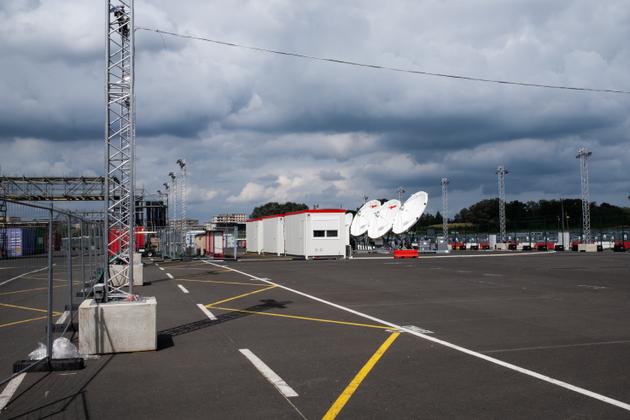


Paris 2024: Behind the scenes of the International Broadcast Center, the Olympics' media and technical heart
FeatureThe International Broadcast Center at the Le Bourget Exhibition Center will host between 8,000 and 10,000 journalists every day. All images and sound from the competition will transit through this highly secure site.
Before airing on television screens all over the world, the images and sounds of the Paris Olympic Games (July 26-August 11) and Paralympic Games (August 28-September 8) will inevitably transit through the International Broadcast Center (IBC). Each edition of the Olympics has its own IBC, a city of electronics and telecommunications. For the Paris Olympics, the International Broadcast Center has taken up residence at the Exhibition Center in Le Bourget, some ten kilometers north of the capital.
On a gloomy July 1, three weeks before the opening ceremony, a handful of journalists were invited to visit this highly secure site. Dozens of workers and technicians dressed in orange vests and white hard hats were busy putting the finishing touches before the opening of this nerve center for the competition's media coverage. Here, 40,000 square meters have been fitted out to enable journalists and technicians to perform their tasks in the best possible conditions for the duration of the Olympics, seven days a week, 24 hours a day.
Television studios, commentary booths, technical control rooms... everything was designed, proposed and often invoiced by Olympic Broadcasting Services (OBS), a subsidiary of the International Olympic Committee (IOC) that produces images and sound thanks to over a thousand cameras installed at Olympic venues. OBS will produce 11,000 hours of programming. Between 3,800 and 4,000 hours will be devoted to live coverage (all competitions and Olympic ceremonies), the remainder being additional original content (behind-the-scenes coverage of events, athletes' preparation), promised OBS. "It's as if you spent a year and three months watching a screen day and night," explained Oksana Bokalo, head of institutional relations for the IOC's media subsidiary.

To get around the 25-hectare exhibition center, a fleet of 800 buses will be on hand every day. On average, between 8,000 and 10,000 people will be working at the IBC on a daily basis. Many of them will spend most of their time in this hive of activity, a real city within the city. Hence the need to provide them with as many services as possible.
There's a supermarket to do shopping, a post office to send parcels and postcards, a shop selling official products to buy souvenirs as well as food trucks, a restaurant and a café to refuel. "There's also a dry-cleaning service, so you can drop off your clothes and pick them up clean and ironed between two live shows," boasted Marie Depecker, IBC's press and circulation manager. "And a wellness area with hairdressers, manicures and pedicures. This is a great service for networks that don't necessarily have make-up artists on site," she added.
You have 58.81% of this article left to read. The rest is for subscribers only.
